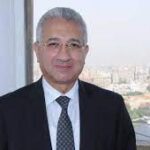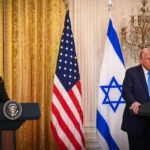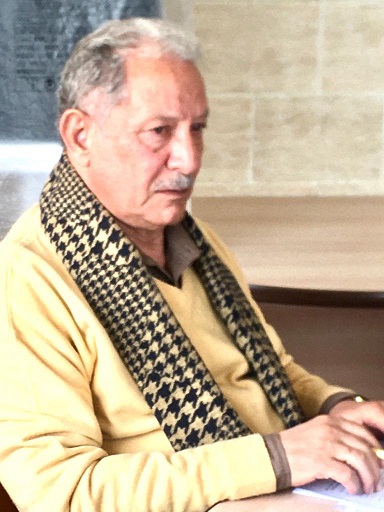
A regional cooperation and security framework for the Middle East
December 3, 2024
ECFA rejects the statements made by US President Donald Trump
February 5, 2025I witnessed the beginnings of the emergence of the oligarchic sectarian (Alawite) regime within the framework of the Syrian Baath Party of Hafez al-Assad’s family in 1970 when I moved to work as a diplomatic member in the Egyptian embassy in Damascus. Hafez al-Assad was then the Minister of Defense and came to power in a coup against the head of state, also an Alawite, General Salah Jadid, within the framework of an arrangement with the leadership of the Alawite sect in an attempt to absorb the overwhelming popular anger from the various Sunni sects, including ethnic backgrounds – Kurds – Druze – (in addition to Christians)..
The Alawite sect – Shiites – represents about 10% of the total population, with a similar or slightly lower percentage for Christians, and the majority, about 80%, are Sunnis. Just as the Syrian sects are distributed in specific regions, the Alawite sect inhabits the Latakia and Tartous regions, which are high mountainous regions on the Mediterranean Sea, where Russian influence and military and naval bases are located..
Thus, the demographic structure of the Syrian people was composed of a homogeneous, coexisting, and compatible mosaic that was not afflicted with the catastrophes that afflicted it except as a result of the practices of the family-inherited regime that continued for nearly five decades. It committed human rights violations, and forced millions to internal displacement and external asylum, and Syria became an arena for regional and international conflicts, between Iran and Russia, which supported the Assad regime, and between Western powers – the United States – that intervened under the pretext of fighting terrorism and preserving human rights, seeking security and economic interests..
Bashar al-Assad’s regime fell – by the standards of history – overnight, at the hands of the Syrian opposition groups that he had previously forced out of central and southern Syria in 2015 with the support of Iran – Hezbollah – the Revolutionary Guards and Russia, so that these groups were stationed in northern Syria in areas under the protection of Turkey. This matter allowed Turkey – and perhaps neighboring countries – to sponsor these groups and support them militarily through training and arming, and politically by unifying their orientations with a priority towards toppling the regime at the appropriate and deadly time, under the leadership of Hay’at Tahrir al-Sham – Muhammad al-Julani – that organization that was born from the womb of the Islamic State organization and separated from it and seeks to appear with a moderate face in the face of the Syrian citizen and Western countries. It appears from reading the developments of events and the positions of the parties that “there is an agreement between Turkey, Israel, the current US administration whose term will soon end, and the incoming US administration on a deal that is in the interest of each of them, and it may likely contribute to enhancing the chances of the birth of a new Middle East, especially since there are indications that the opposition alliance led by al-Julani has received support and endorsement from the four parties in one way or another, including Israel, with what is being said about Israel’s cooperation in treating wounded members of the organization in Israeli hospitals, and with what appears to be the orientations and tendencies of Hay’at Tahrir al-Sham’s independence from ISIS and al-Qaeda and towards adopting a moderate Islamic orientation to be consistent with the orientations of the other groups in the alliance, and the influential regional and international powers.”.
The opposition forces’ move to prioritize overthrowing the regime came at a time when both Russia and Iran abandoned their support for the Assad regime, for their own interests. Russian support for the Assad regime declined due to developments in the Russian-Ukrainian war and most likely due to pressure from the new US administration to trade Russia’s ambitions in Ukraine for Syria, and in agreement with the current administration in this regard as well, in order to achieve success, even if formally, that appears as an achievement before the end of its term by overthrowing the Assad regime. Iranian support and backing also declined in the face of what happened to Iran and its arms from a series of strikes and assassinations of Iranian leaders, Hezbollah leaders and its forces in Lebanon and Syria, in addition to what happened to Hamas in this regard, so that Iran retreated around preserving the regime and seeking to secure its nuclear program, which explains the decline in Houthi activities in Yemen and the adoption by the regime in Iraq – with a Shiite majority – of a position characterized by prudence and avoiding involvement through the Popular Mobilization Forces..
Despite the repeated assurances from the leadership of the opposition coalition about the unity of the opposition forces, adherence to the unity of the state and its territorial integrity, preservation of state institutions, dealing with all the Syrian people without discrimination, and building a free, just and democratic state based on equality among all citizens without discrimination, and what appears to be an agreement on the peaceful transfer of power to a new prime minister, with Assad leaving the scene by seeking refuge in Russia, the state faces enormous challenges that threaten, among other things, the unity of the state and its territorial integrity with division and fragmentation if a dispute arises between the components of the opposition coalition over power and political direction. Israel has already begun to violate what was included in the disengagement agreement between it and Syria in 1974, and even announced the termination of the agreement, and entered with its forces the Mount Hermon area and perhaps after that, with talk about establishing safe zones like those it is talking about in Gaza and Lebanon..
Syria is facing a delicate and dangerous transitional phase, which requires effective and influential Arab action in the bilateral and multilateral framework, going beyond supportive and endorsement statements and declarations, through opening direct channels of communication with the opposition forces alliance, and through Syrian refugee groups and organizations, especially in neighboring countries, to support the nascent Syrian revolution again, politically, in a manner consistent with the choices of the Arab Syrian people, and to achieve security and stability and ward off the dangers of the challenges it faces, and to contribute to reconstruction and reconstruction through a comprehensive Arab plan..
The article was published in Al-Ahram newspaper on December 16, 2024.Permanent link:




